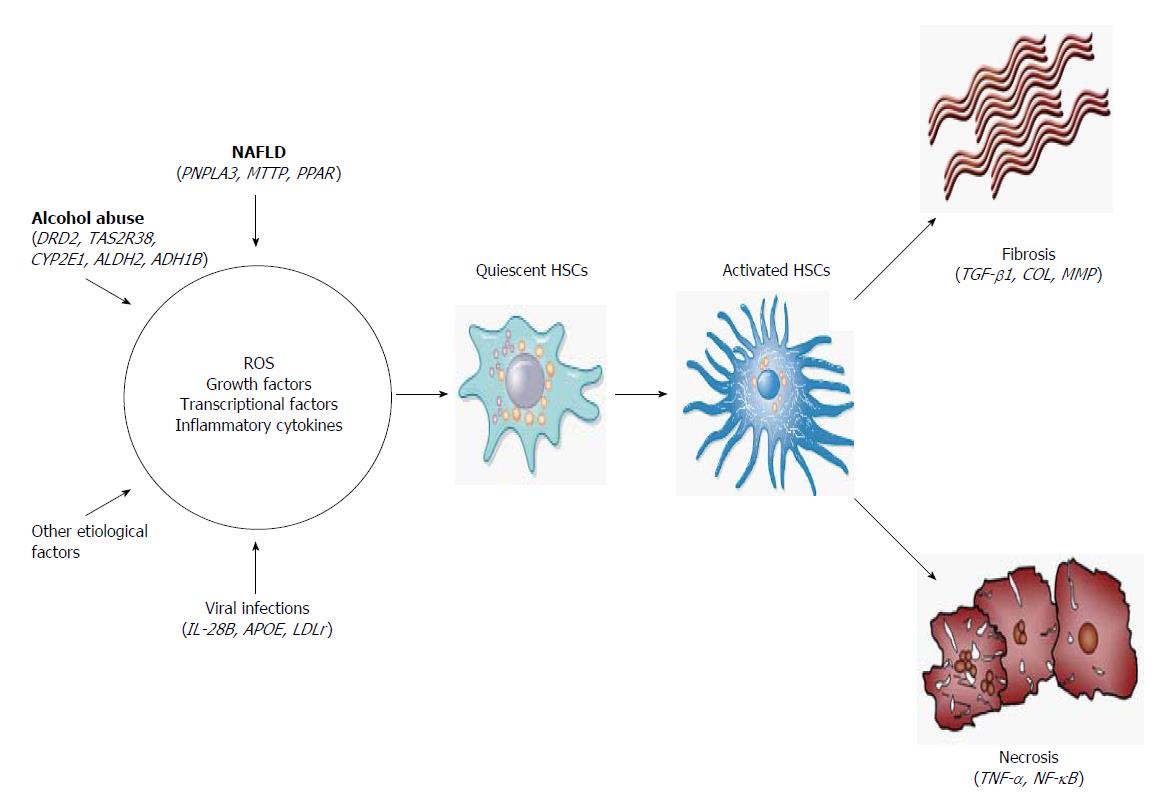Copyright
©The Author(s) 2015.
World J Gastroenterol. Nov 7, 2015; 21(41): 11552-11566
Published online Nov 7, 2015. doi: 10.3748/wjg.v21.i41.11552
Published online Nov 7, 2015. doi: 10.3748/wjg.v21.i41.11552
Figure 2 Hepatic fibrogenesis.
Different etiological factors induce production of several stimuli to HSCs activation. Activated HSCs promote fibrosis and necrosis of hepatocytes. These pathogenic processes can be modulated by genetic polymorphisms involved in each stage of the pathophysiological process. HSC: Hepatic stellate cells; DRD2: Dopamine receptor D2; TAS2R38: Bitter taste receptor; CYP2E1: Cytochrome P450, family 2, subfamily E, polypeptide 1; ALDH2: Aldehyde dehydrogenase 2 family; ADH1B: Alcohol dehydrogenase class I, beta polypeptide; PNPLA3: Patatin-like phospholipase 3; MTTP: Microsome triglyceride transfer protein; PPAR-γ2: Peroxisome proliferator-activated receptors; IL-28B: Interleukin-28B; APOE: Apolipoprotein E; LDLr: Low-density lipoprotein receptor; TGF-β1: transforming growth factor beta 1; COL: Collagenases; MMP: Matrix metalloproteinase; TNF-α: Tumor necrosis factor alpha; NF-κB: Nuclear factor kappa B; ROS: Reactive oxygen species.
- Citation: Ramos-Lopez O, Martinez-Lopez E, Roman S, Fierro NA, Panduro A. Genetic, metabolic and environmental factors involved in the development of liver cirrhosis in Mexico. World J Gastroenterol 2015; 21(41): 11552-11566
- URL: https://www.wjgnet.com/1007-9327/full/v21/i41/11552.htm
- DOI: https://dx.doi.org/10.3748/wjg.v21.i41.11552









